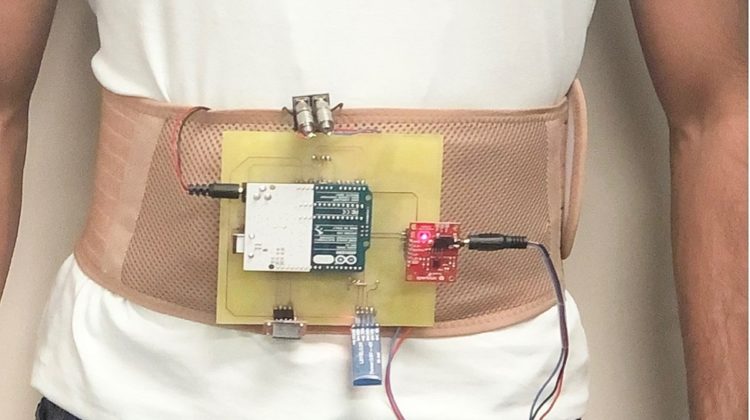
Researchers from Florida Atlantic University’s College of Engineering and Computer Science, in collaboration with FAU’s Christine E Lynn College of Nursing, have developed a prototype of a wearable device that can continuously monitor all of the physiological parameters associated with heart failure in real time.
There are currently two heart failure monitoring systems available. However, they are costly and pose risks because they are surgically implanted under the skin. Moreover, about half of patients with heart failure don’t need an implantable device or don’t qualify for the thoracic (area between the neck and abdomen) monitoring these devices provide. There is a critical need for non-invasive solutions to monitor heart failure progression around the clock.
The technology of the prototype is based on sensors embedded in a lightweight belt that can worn around the waist to monitor four physiological parameters that are significant in determining heart failure symptoms:thoracic impedance, electrocardiogram (ECG), heart rate and motion activity detection.
The researchers tested the wearable device in a range of different conditions, including sitting, standing, lying down and walking. The results showed that all of sensors kept track of changes for all of the conditions. The position sensor correctly highlighted the change in position in different conditions and could be used to identify different states of the wearer of the device. In addition, the heart rate sensor continually kept track of the heart rate. Importantly, the device correctly highlighted minute changes in thoracic impedance.
Like most ECG monitors, the ECG sensor in the wearable device was very sensitive to motion, particularly while walking. However, even while walking, the sensor retained its QRS complex (the electrical impulse as it spreads through the ventricles of the heart) along with R-peaks (intervals of the QRS complex), which are important indicators for left ventricular hypertrophy, indicative of an increase in the size of myocardial fibres in the main cardiac pumping chamber.
‘All of the sensors we integrated into our belt module can easily be worn for a long period of time without affecting the patient’s daily activities,’ said Waseem Asghar, an associate professor in FAU’s Department of Electrical Engineering and Computer Science. ‘Importantly, continuous and real-time monitoring of heart failure symptoms could alert patients and their health care providers to the patient’s declining health. In turn, health care providers could intervene with medications to avoid patient hospitalisation.’
The researchers expect that their technology will have higher predictive values for heart failure with increased specificity and high sensitivity.
‘Approximately one in four patients with heart failure are readmitted within 30 days of discharge from the hospital and about half are readmitted within six months,’ said Mary Ann Leavitt, an assistant professor in FAU’s Christine E Lynn College of Nursing. ‘Health care wearable devices such as the prototype we have developed have the potential to decrease hospital readmissions in a cost-effective way that also is safe and convenient for the wearer.’
Based on the study results, the researchers are currently testing the module over a set of diverse subjects to develop an algorithm to predict heart failure over the test set.
‘This wearable device to monitor heart failure […] has important social implications for the fastest-growing cardiovascular disease in the USA,’ said Sheikh Muhammad Asher Iqbal, a research assistant and a PhD. student in FAU’s Department of Electrical Engineering and Computer Science. ‘We are developing a non-invasive solution that can be used by all heart failure patients for better management, diagnosis and prognosis that will be able to serve the masses.’
The research has been published in Scientific Reports.



